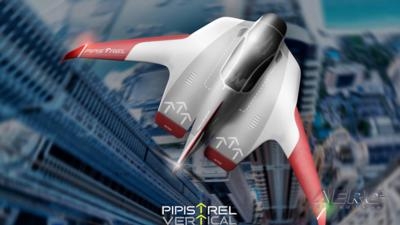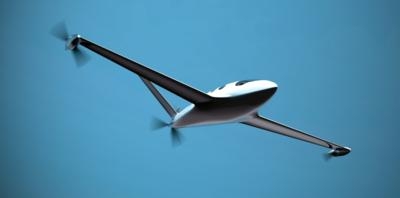Brings Agility, Stability And Safety To Future Electric Vertical Takeoff And Landing Aircraft
Honeywell has unveiled a new compact "fly-by-wire" system that is approximately the size of a paperback book. The computer packs the "brains" of an airliner's flight controls into one system, and is the next step towards autonomous and Urban Air Mobility vehicles.

The flight control computer from Honeywell adds stability to these revolutionary aircraft designs by driving electric actuators and dynamically adjusting flight surfaces and motors for smoothly following flight paths. It reduces turbulence and allows designers to push the limits of aerodynamics, eliminating the need for heavy hydraulics, control cables or pushrods.
"Honeywell's technology truly enables these innovative aircraft to fly more safely, accelerating a whole new era in what is quickly emerging as a new transportation economy," said Carl Esposito, president, Electronic Solutions, Honeywell Aerospace.
The flight control computer has architectural features derived from Honeywell's proven and certified existing compact fly-by-wire systems for airplanes and is built to aviation industry certification standards, providing the highest levels of availability and integrity.
Honeywell's offering features a triplex flight control computer architecture, providing multiple backup options and eliminating the risk of relying on one system failure. In addition, each computer uses lockstep processing, meaning it has two processing channels that constantly check each other's work. These features provide the safest and most reliable operation that will meet the future requirements of transporting passengers in highly populated urban areas.

Dubbed compact fly-by-wire system because the controls are augmented by electronics versus purely manual controls, this new compact computer can be held in one hand compared with similar technologies installed on larger aircraft that are roughly the size and weight of a fully loaded suitcase. Honeywell's solution will draw less power, cost a fraction of current systems, and can be used on multiple aircraft types, including more traditional aircraft vehicle designs.
"Aircraft designers can use the compact flight control computer out of the box with easy-to-use development tools," Esposito said. "It was designed for connectivity to achieve better maintenance and improved fleet operations."
Honeywell plans to demonstrate the new system June 11–12 at the Uber Elevate Summit in Washington, D.C.
This system is the latest in a series of products Honeywell is developing for the fast-growing urban air mobility market. More than 100 companies worldwide are designing new cargo and passenger aircraft capable of on-demand flight across short distances, many of them self-flying and able to take off and land vertically.
Honeywell recently exhibited its new hybrid-electric turbogenerator prototype, designed to power the multiple propellers and fans found on many new urban air vehicles. The turbogenerator combines the flight-proven HTS-900 turbine with two miniaturized generators, producing a total of 400 kilovolts — enough electricity to power 40 average American homes running air conditioning at full blast.
Honeywell has also signed agreements to develop navigation and automatic landing systems for Volocopter's vertical takeoff and landing aircraft, and to develop avionics, radios, navigation, flight control systems, connectivity and other products for Pipistrel's vertical takeoff and landing aircraft as well as eViation's fully electric ALICE aircraft.
(Source: Honeywell news release. Images from file)
 Airbus Racer Helicopter Demonstrator First Flight Part of Clean Sky 2 Initiative
Airbus Racer Helicopter Demonstrator First Flight Part of Clean Sky 2 Initiative Diamond's Electric DA40 Finds Fans at Dübendorf
Diamond's Electric DA40 Finds Fans at Dübendorf ANN's Daily Aero-Term (04.23.24): Line Up And Wait (LUAW)
ANN's Daily Aero-Term (04.23.24): Line Up And Wait (LUAW) NTSB Final Report: Extra Flugzeugbau GMBH EA300/L
NTSB Final Report: Extra Flugzeugbau GMBH EA300/L Classic Aero-TV: 'Never Give Up' - Advice From Two of FedEx's Female Captains
Classic Aero-TV: 'Never Give Up' - Advice From Two of FedEx's Female Captains




